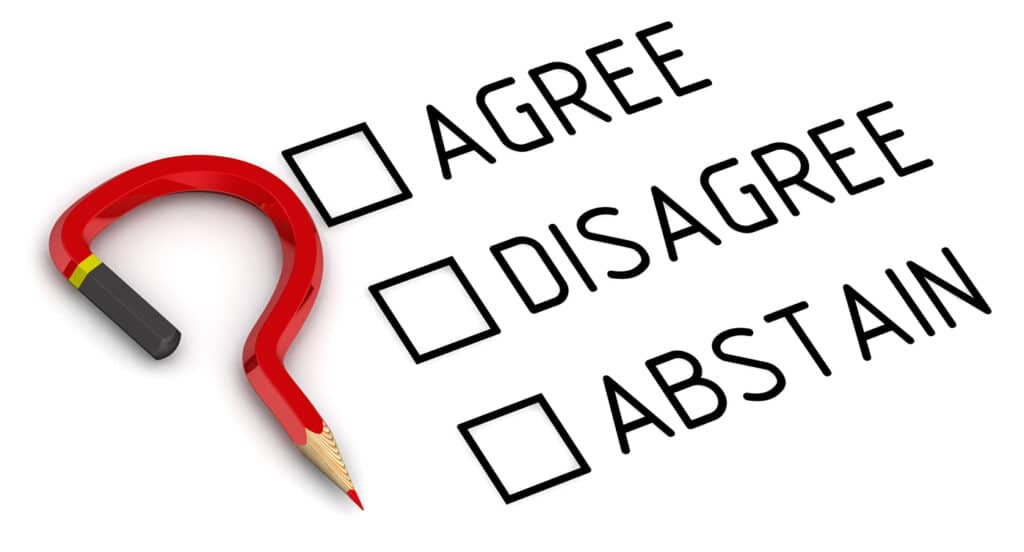1. Should the Chair ask if there are any abstentions?
In general, no. The Chair should not ask for abstentions; she should only ask who is in favor of or opposed to a motion. The reason is that, because members are not required to vote, it is not fair to ask people to tell everyone about their choice not to vote.
Public bodies are often exceptions to this rule, though. Elected or appointed officials are chosen by the public to serve, so the public expects to know their opinions. Check with applicable laws to see whether a specific public body operates differently and requires that abstentions be recorded.
2. Are abstentions counted during the calculation of a vote?
Generally, no. Abstentions are not counted because votes are usually calculated based on the number of those who did cast a vote.
In other words, motions are decided when there is a majority of “yes” or “no” votes among those present and voting. An abstention is a choice not to vote, so an abstention isn’t part of those voting and, therefore, isn’t included in the vote calculations at all.
However, abstentions can affect the vote result if your governing documents calculate majority based on the number of individuals present or on the number of total members. In these cases, abstentions function as “no” votes (or votes opposed to a motion).
Learn more about vote calculation with Civility’s downloadable resource—Vote Counting Cheat Sheet.
3. What happens if so many members abstain that the number of members who actually vote is not a quorum?
This is another instance when the number of abstentions may be recorded. If the number of abstentions is significant, resulting in fewer members voting than the number required for a quorum, people may question whether a quorum was actually present during that vote.
So, it is permissible in this case to record the number of voters who abstained as well as the number of votes cast. The total number gives evidence that there was a quorum present during that vote.
4. Is abstaining the same as recusing?
No. Abstaining and recusing mean two different things.
- Abstaining from a vote means not voting—for any reason.
- Recusing from a vote means abstaining for a particular reason—because of a conflict of interest. Recusing is also a bit broader in meaning—it includes both abstaining from the vote and from all ability to influence the vote. So, any member recusing himself from a vote must leave the room for both the discussion and the vote. Recusal (leaving the room and not participating in the discussion and vote) is also commonly noted in the minutes.
5. Can a member voluntarily announce their abstention and expect their abstention to be recorded in the minutes?
No. Unless the group agrees to record that abstention by a majority vote, no member can demand that their vote or abstention be included in the minutes.
Exceptions to this are discussed above: Abstentions by elected officials in public meetings and abstentions in a recusal situation may be noted in the minutes.
Where to Learn More
- From Civility
- Other Sources


